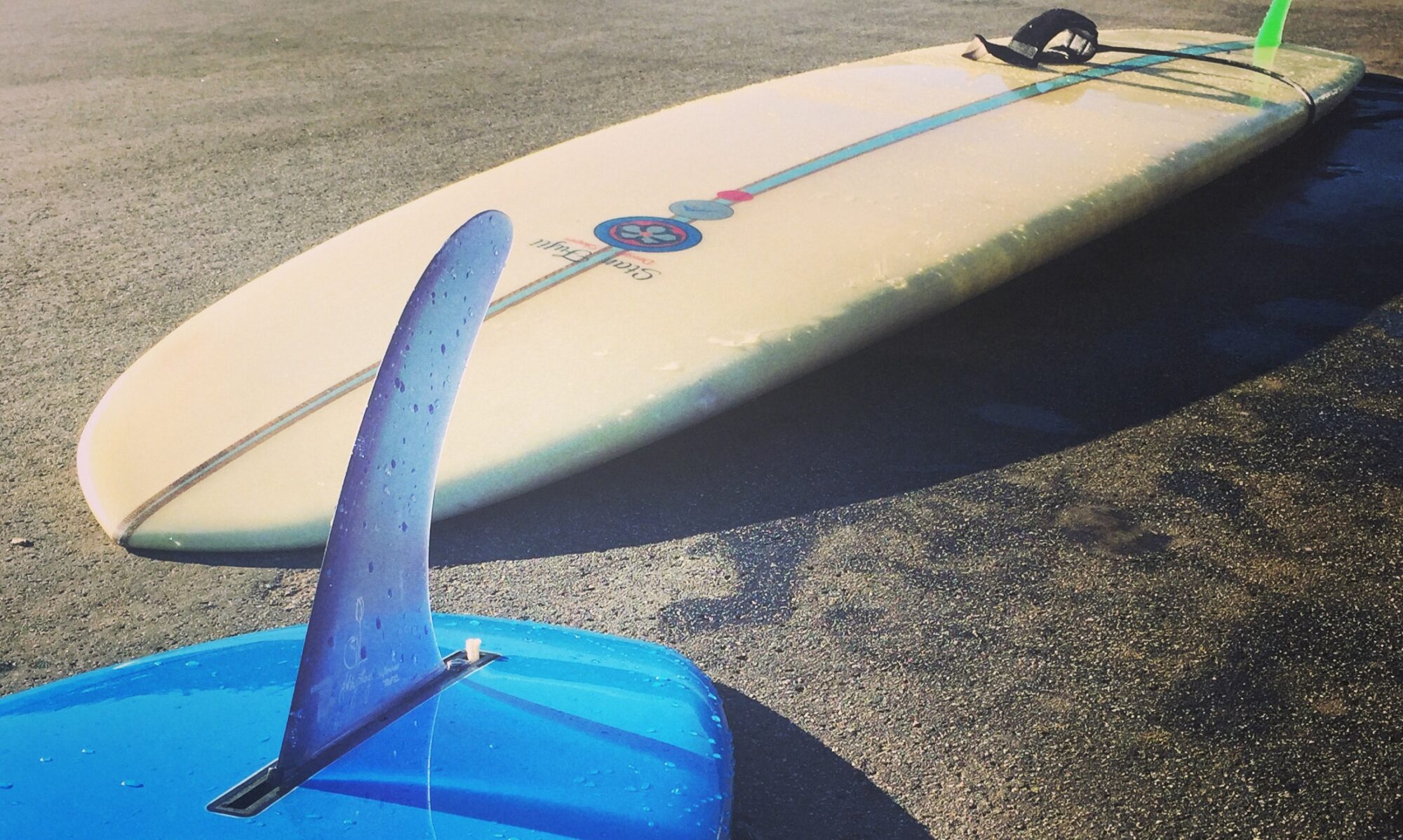Conditions: 3-4 ft. + – waist to shoulder high and poor+ conditions.
Gear: 8 ft Sunset Soft top, 9’4″ Sunset soft top from NorCal Surf Shop
and Freestyle Tide 3.0 watch. I now know what time it is AND what the tide is doing. Awesome.
I got off to a wobbly start on a board that was too short for me. After trading it in IÂ caught a lot more waves, got in a few nice clean pop ups, plus a few really messy pop ups.
The best part of the day for me was completing my first bottom turn!
It’s supposed to look something like this www.surfline.com/video/video_player/video_player.cfm
What I did was zip down the wave face, dip the righthand rail in the water, and slingshot back up the wave going WAAAAAHHOOOOOOOÂ before falling off. You’re supposed to use the momentum to turn back down and continue along the wave. I was so stoked to just turn that I didn’t even think about following through. It was awesome, I can’t wait to try it again.
Injury report: Somehow on one wave I managed to go flying in the air and to board flipped over on it’s deck. I came crashing down, my knee landing on the center fin, skidding into another forward fin. My hip and elbow hit the bottom of the board. I’m gonna have some wicked bruises when everything stops being swollen. Plus side is everything moves around just fine and doesn’t hurt unless I poke it.
In gear news, the new watch was a success. The buttons are easy to press with cold wet hands and it says put pretty well. I’m trying to figure out a good way to fit it on my wrist above my wetsuit without bumping around when I paddle. All and all, it’s great. I can now see what time it is and what the surf is doing. 🙂
Why is the tide important to surfing? Depending on the beach, some beaches have the best waves at high tide, some at low, and some in the middle. It also effects where the waves break at some beaches and what kind of wave you’ll have. For someone like me who’s just learning to surf a wave that’s spilling, rather than breaking will be an easy wave to ride for a long time. For someone who’s really got things down, a plunging wave is best. For more information, check out this great write up from Surfline.


